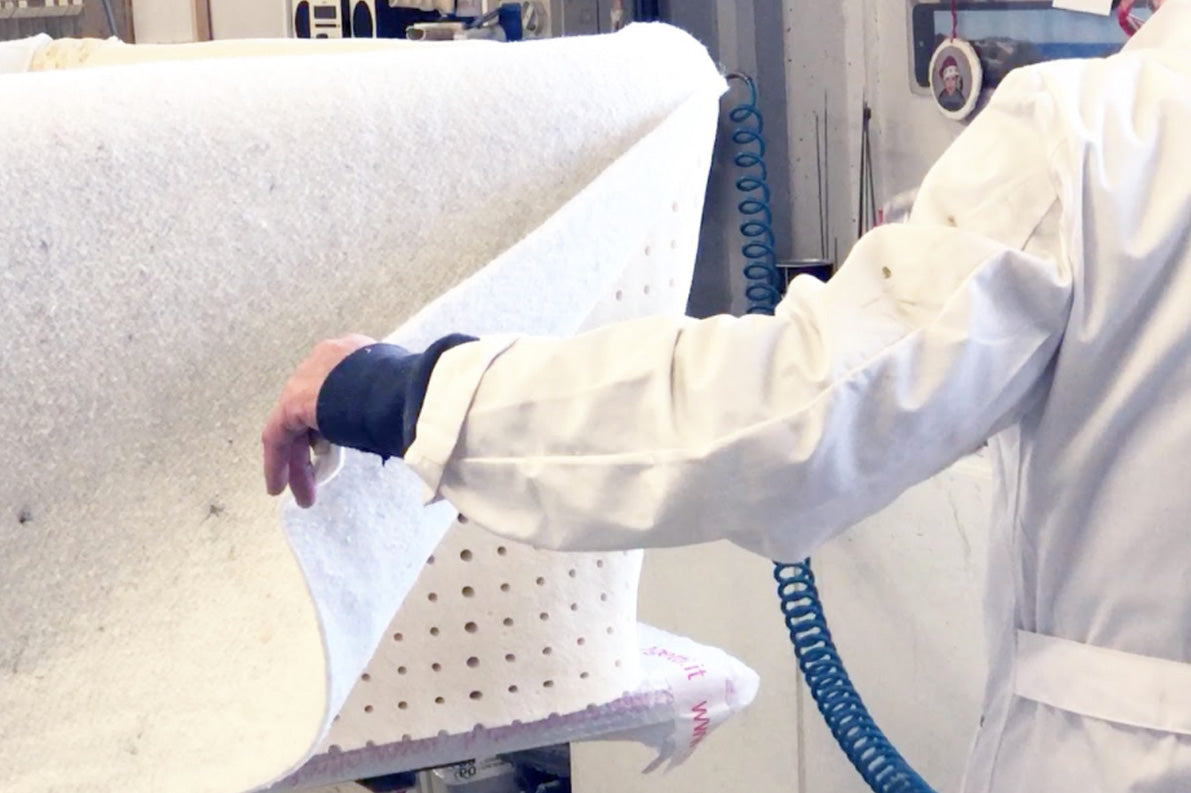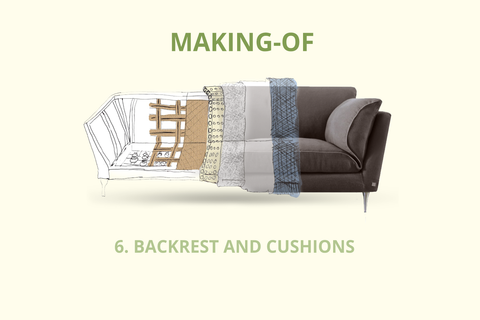In our previous articles we discussed how we take an idea to a sketch and then turn it into a complete 3D model and eventually create the wooden skeleton for the sofa Casquet. Layers of natural material and steel springs are added to provide comfort. If you have not followed our previous articles of our ‘Making Of’ series, read up here.
100% natural latex
On top of the jute material on the seating area, but also for the armrests and all around we are now applying a layer of 100% natural latex. The latex is delivered in large blocks and we cut it down to the needed sizes in the correct height and length using our large scale vertical saw. This process takes experience and craftsmanship, as the material is very soft and any push or pull in the wrong direction will result in an uneven cut.
 Depending on the level of softness we want to achieve for the various parts on a sofa, the cut pieces of natural latex will vary anywhere from 1 to 20 centimeters. By carefully applying the different layers of latex we can sculpt the sofa as envisioned in the first sketches. This really is the difficult part, especially when constructing a sofa with rounded or soft lines, and here all the workmanship of our artisans really plays in our favour.
Depending on the level of softness we want to achieve for the various parts on a sofa, the cut pieces of natural latex will vary anywhere from 1 to 20 centimeters. By carefully applying the different layers of latex we can sculpt the sofa as envisioned in the first sketches. This really is the difficult part, especially when constructing a sofa with rounded or soft lines, and here all the workmanship of our artisans really plays in our favour.

Extra cotton layer for a smoother feel
To protect the latex cells from dust and damage, we apply an extra layer of recycled cotton felt. Besides the protection, this layer will also provide a firmer feel and keep the relatively wobbly latex foam compact and in shape. Furthermore this cotton layer will also support the final textile cover to run smoothly and not produce any creases or folds.
We now have a basic frame with cushioned armrests and an overall relatively soft touch already, covered in white cotton felt. The next step is to add two layers of textile that will give the sustainable sofa the final finish and appeal.







